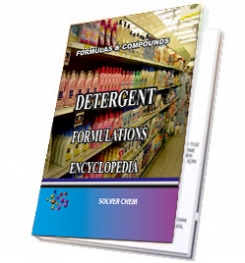Detergent Formulations Encyclopedia
Sodium polyphosphate glass (SHMP) may be added to water system to prevent the formation of calcium or magnesium scales by reducing the activity of the hardness ions. However, if the ratio of cation to polyphosphate is too high at a given pH, insoluble precipitates such as may result instead of the soluble polyphosphate complexes. The... [Pg. 340] Linear ethoxylates are the preferred raw materials for production of ether sulfates used in detergent formulations because of uniformity, high purity, and biodegradabihty. The alkyl chain is usually in the to range having a molar ethylene oxide alcohol ratio of anywhere from 1 1 to 7 1. [Pg. 83] Co-buHders such as nitnlotriacetic acid or polycarboxylates also may be incorporated into the detergent formulation. Wash performance of detergents decreases with increasing calcium concentration. Protease performance varies, but high calcium concentrations tend to reduce protease performance. Therefore it is an advantage to add a buHder system to the detergent.
Detergent formulation
- Bolognia dermatology 4th edition pdf
- James blunt no bravery guitar
- Handbook of Detergents Formulation Download | Detergent | Books
- Oracion a san valentin para que regrese el ser amado
- Read helen hardt twisted online free
- Safilonet safilo net reviews
- Raqueleita Blog: Adiós al Vello no Deseado con Frénésies
- Detergent formulations encyclopedia pdf free download

Types of Detergents Detergents are classified according to their electrical charge: Anionic detergents: Anionic detergents have a net negative electrical charge. The liver produces bile acids, which are anionic detergents the body uses to digest and absorb fats. Commercial anionic detergents are usually alkylbenezesulfonates. The alkylbenzene is lipophilic and hydrophobic, so it can interact with fats and oils. The sulfonate is hydrophilic, so it can wash away soiling in water. Both linear and branched alkyl groups may be used, but detergents made with linear alkyl groups are more likely to be biodegradable. Cationic detergents: Cationic detergents have a net positive electrical charge. The chemical structures of cationic detergents are similar to those of anionic detergents, but the sulfonate group is replaced by quaternary ammonium. Non-ionic detergents: Non-ionic detergents contain an uncharged hydrophilic group. Usually, these compounds are based on a glycoside (sugar alcohol) or polyoxyethylene.

